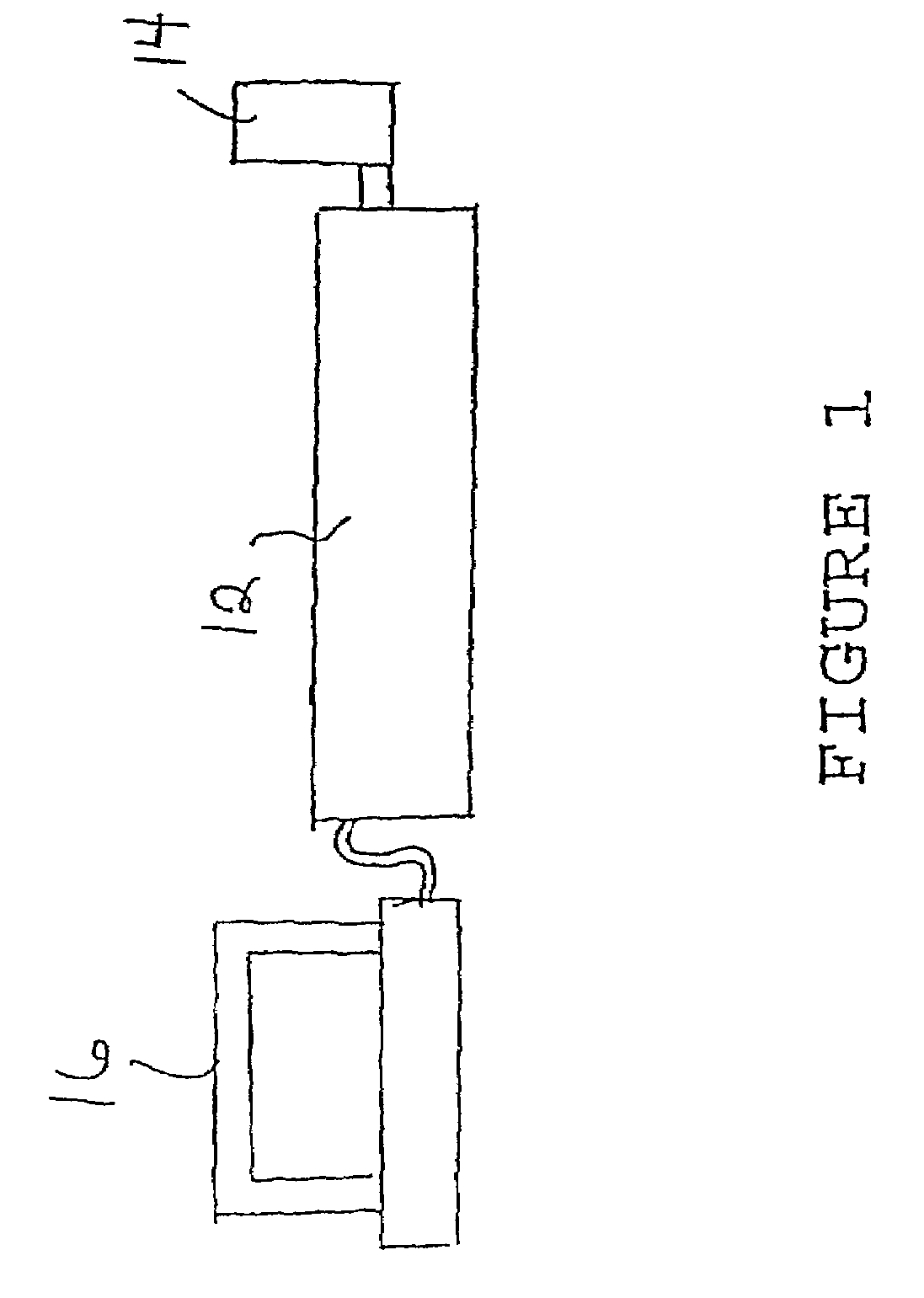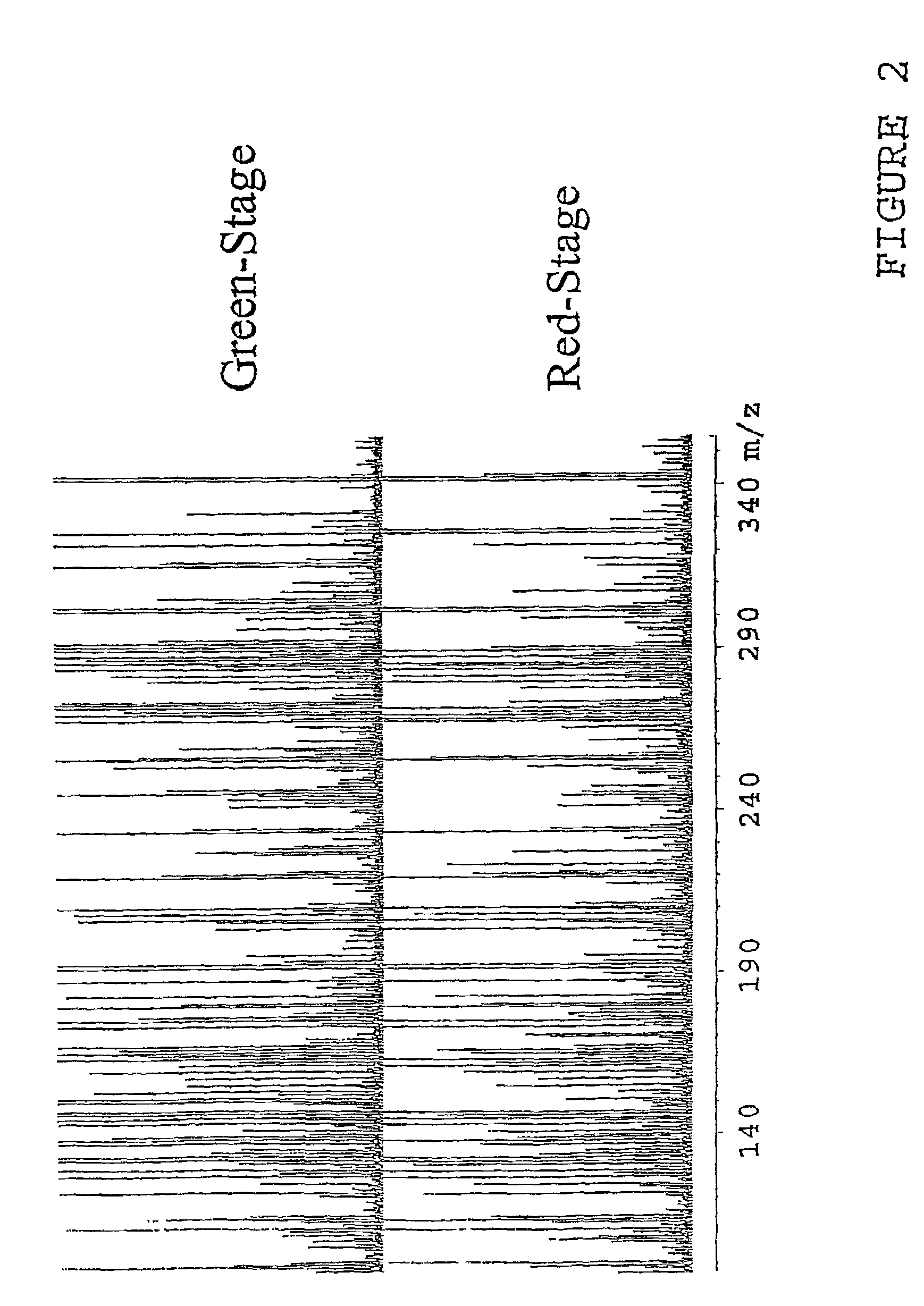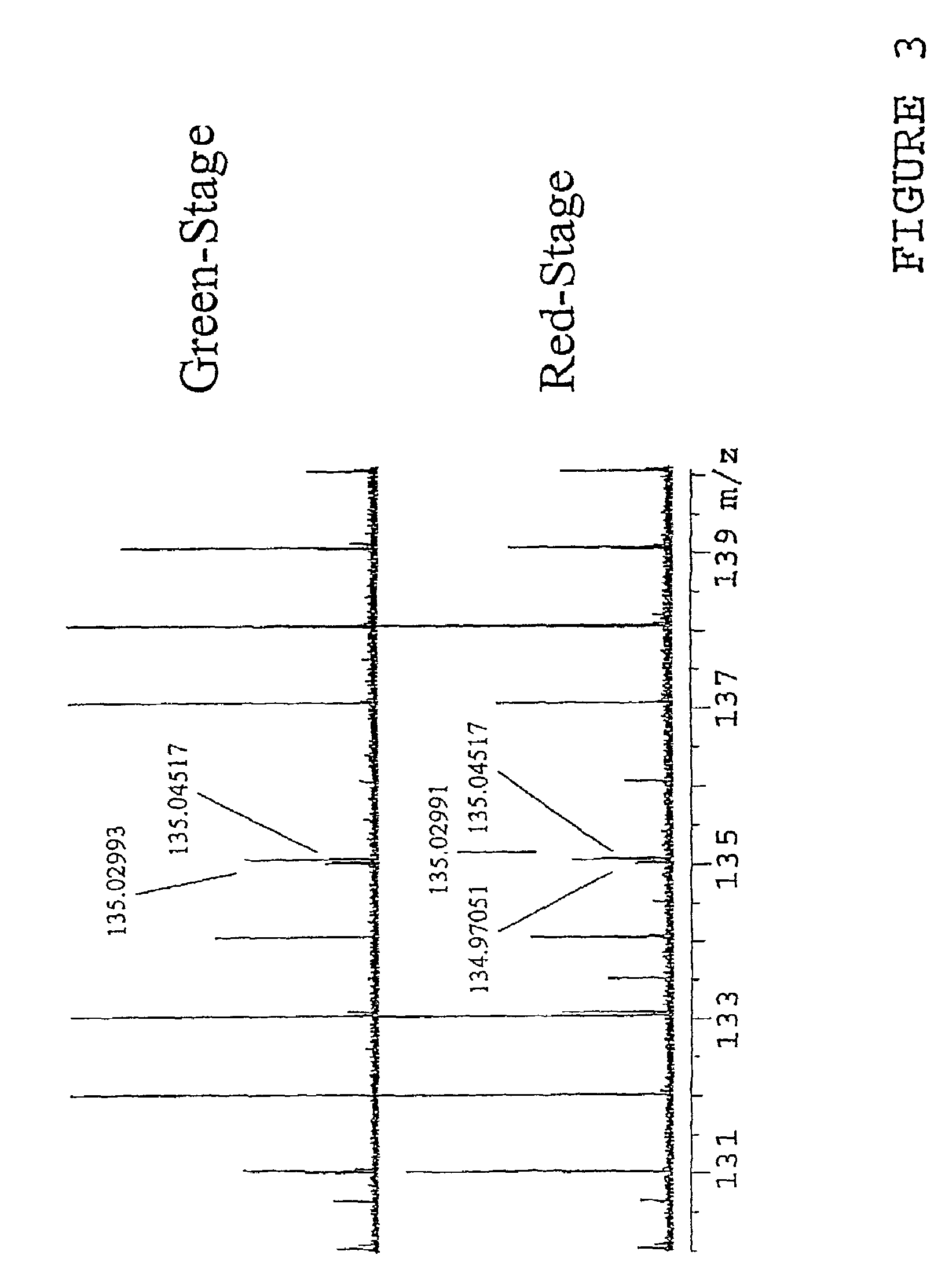Method of non-targeted complex sample analysis
a sample analysis and complex technology, applied in the field of non-targeted complex sample analysis, can solve the problems of inability to use commercial instruments, inability to achieve finite limit inherent in technology, and difficulty in identifying complex mixtures, etc., to achieve accurate ftms mass capability, simplify the analysis of complex mixtures, and reduce the effect of toxicity
- Summary
- Abstract
- Description
- Claims
- Application Information
AI Technical Summary
Benefits of technology
Problems solved by technology
Method used
Image
Examples
Embodiment Construction
[0039]The preferred method of non-targeted complex sample analysis embodiment will now be described with reference to FIG. 1 The purpose of this invention is to provide a means of analyzing large numbers of complex samples, for example biological extracts, and be able to analyze the information in a non-targeted fashion after the analysis is complete to determine the differences between samples.
[0040]In the invention complex samples are directly injected into the FTMS 12 though the use of an autosampler 14 with or without the additional use of a chromatographic column. The components of the mixture are ionized by one of many potential “soft” ionization sources (electrospray, APCI, FAB, SIMS, MALDI, etc.) and then transferred into the ion cyclotron resonance (ICR) cell with or without additional mass-selective pre-separation (quadrupole, hexapole, etc.). The ions are then separated and measured in the ICR cell with or without simultaneous MS / MS occurring The data collected (mass spec...
PUM
| Property | Measurement | Unit |
|---|---|---|
| mass | aaaaa | aaaaa |
| external force | aaaaa | aaaaa |
| Mass | aaaaa | aaaaa |
Abstract
Description
Claims
Application Information
 Login to View More
Login to View More - R&D
- Intellectual Property
- Life Sciences
- Materials
- Tech Scout
- Unparalleled Data Quality
- Higher Quality Content
- 60% Fewer Hallucinations
Browse by: Latest US Patents, China's latest patents, Technical Efficacy Thesaurus, Application Domain, Technology Topic, Popular Technical Reports.
© 2025 PatSnap. All rights reserved.Legal|Privacy policy|Modern Slavery Act Transparency Statement|Sitemap|About US| Contact US: help@patsnap.com



